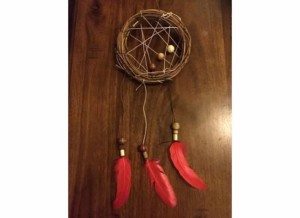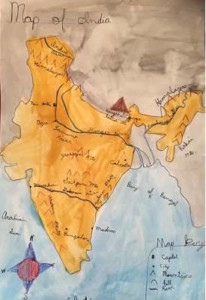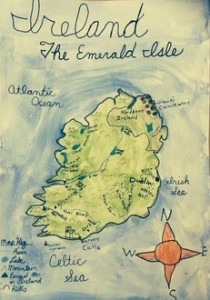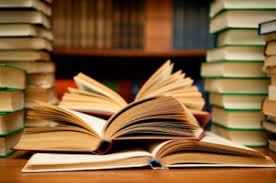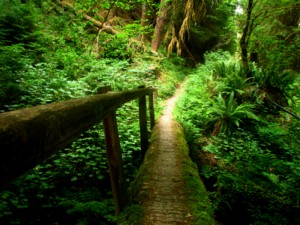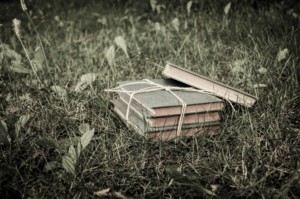Ireland Country Study
The Books:
Note: I was able to find almost all of these books in the local library, but some are so wonderful that they can make a special addition to your homeschool library. Not every book is necessary, but my children truly enjoyed reading an array of books about leprechauns, St. Patrick’s Day, and other legends.
Just in case the Amazon book links didn’t load on your computer, here is a written book list:
The Leprechaun’s Gold – Edwards
Tim O’Toole and the Wee Folk – McDermott
Leprechauns Never Lie – Balian
Fin M’coul : The Giant of Knockmany Hill – dePaola
Tales from Old Ireland – Doyle
Jamie O’Rourke and the Big Potato – dePaola
A Fine St. Patrick’s Day – Wojciechowski
St. Patrick’s Day – Gibbons
The Last Snake in Ireland – Macgill-Callahan
Leprechaun in Late Winter (Magic Tree House) – Pope-Osborne
Leprechauns and Irish Folklore (Magic Tree House Fact Tracker) – Pope-Osborne
The King of Ireland’s Son – Behan
Too Many Leprechauns – Krensky
S is for Shamrock – Bunting
Great Irish Legends for Children – Carroll
Introduction to Ireland: Flying Over Ireland
Tell your children that Ireland’s nickname is “The Emerald Isle,” because it is so green. Then, to give your children an introduction to the breathtaking beauty of Ireland, watch these videos with them.
Mapping Ireland:
Mapmaking is such an exciting project for children. It is a historic art form as well as a meaningful way of learning the geography of a country. I find that my children truly learn and retain their geography when they create their own maps, rather than color in dittos. Here is how we approached mapping Ireland.
Materials needed- large watercolor paper, a cut-out of the shape of Ireland prepared by the parent before (for younger children to trace) an India Ink black pen, watercolors, colored pencils, and an atlas map of Ireland, or maps printed from the internet)
Day 1
1. Look at a map of Ireland and discuss what you see.
2. Give your child the cutout of the shape of Ireland ( that you have previously prepared by simply making an outline of the country and cutting it out) and have your child trace around it on her watercolor paper.
3. Then, with a waterproof India Ink pen, outline the map and title it, “Ireland, The Emerald Isle.”
4. Watercolor the land green and the ocean blue.
5. Note that Dublin is the capital of Ireland. Find it on the map and label it.
Day 2
6. Spend a day just on the waters of Ireland, beginning with the seas and oceans. Label the Atlantic Ocean, the Celtic Sea, and the Irish Sea.7. Then move on to rivers. Include the five largest rivers, plus the River Liffey as it passes through the capital city. Draw the rivers Shannon, Blackwater, Barrow, Suir, Nore, and Liffey. (Using a blue colored pencil)
8. Look at the Loughs (Lakes- pronounced Locks) and labeled the seven largest loughs. (Lough Neagh, Corrib, Mask, Conn, Ree, Derg, and we included Lough Allen.
http://www.mapsofworld.com/ireland/ireland-river-map.html
Day 3
9. Talk about Northern Ireland, if you haven’t already, and have your child outline it on her map and shade and label it. (This is a culture and geography study meant to precede the study of history so that history will be more meaningful. Through conversation, I introduce my children to important topics, such as the British rule of Ireland. Topics like these come up during many country studies and need to be introduced because they often affect the language as well as religion of the region. But we have this conversation as an introduction and will address it in depth when we study history.)
Day 4
10. Make arches for areas with hills and points for mountain ranges. Find Carranttuohill Mountain, the largest mountain in Ireland, and label it with a colored-in triangle. If your atlas doesn’t have mountains and hills, click on this link for a reference.
Wikipedia has a simple map that shows where the hills and mountains are.
https://en.wikipedia.org/wiki/List_of_mountains_in_Ireland
Day 5:
11. Look up where the Giant’s Causeway is and label it after reading the story of the giant Fin M’Coul. (A favorite for my children and a well known folktale in Ireland)
12. Label the Blarney Castle on the map famous for the Blarney stone.
http://www.blarneycastle.ie/pages/kiss-the-blarney-stone
13. Create a map key to show what all your symbols represent, as well as a compass rose.
Day 6:
1. Use your atlas or reference map to find major cities and label them on your map.
Wildlife Map of Ireland:
Learning about the wildlife of the country you are studying is as equally important to learning about the geography and cultures, as hopefully we are raising a generation that will contribute to the well being of our planet, the protection of species, and the preservation of wildlife. There is no better way to contribute to that goal than to nurture in our children, from a young age, a respect and admiration for nature and wild life.
Materials- a cutout of Ireland (same cutout used for the first map), a large piece of thick paper, (we always use watercolor paper so that these projects last), colored pencils, india ink pen, and either block crayons or watercolors.)
Begin learning about the wildlife of Ireland by watching the nature documentary below.
1. Using your cutout, make an outline of Ireland on your paper in dark green colored pencil.
2. Label the oceans and seas around Ireland as you did on your country map.
3. Use this link to learn about native or common animals in Ireland.
4. Pick your favorite animals from either the link or the documentary and draw pictures of them in the appropriate region on your map and label them.
5. Use this link to learn more about the wildflowers of Ireland and this link to learn about trees of Ireland.
6. Pick your favorite wildflowers or trees native to or common in Ireland. Draw pictures of them on your map an label them.
7. Title your map, “Wildlife Map of Ireland.”
8. Using watercolors or block crayons (or the side of a crayon), color the land green and the ocean blue.
Flag of Ireland:
Have your children draw a picture of Ireland’s flag. Then explain to them that the flag has meaning. Simplifying things a bit; the green represents the Irish Gaelic Catholic heritage, the orange represents the English and the Protestants, and the white represents a lasting peace between the two. To read more about Ireland’s flag, click here.
Religion and Holidays in Ireland:
Ireland is predominantly a Catholic country (Northern Ireland is majority Protestant, although there is a large population of Catholics as well).
To read more about religion in Ireland, click here.
All of the major Christian holidays are celebrated in Ireland, as well as a few distinctly Irish/ Gaelic holidays, such as Samhain and St. Patrick’s Day.
Read the books about St. Patricks Day (links above in the books section) and ask the kids to draw a picture on half of the page to represent the holiday. Then have them write a short narration about the meaning of the holiday and who St. Patrick was.
Ask your children if they know where the holiday Halloween came from. Tell them that Halloween was a Celtic holiday celebrated in Ireland. The Irish call the holiday Samhain in Gaelic, (pronounced Saween) and they used turnips to make Jack-o-Lanterns. When the Irish began to immigrate to America from Ireland, there weren’t enough turnips, so people began using Pumpkins. The name of the holiday became Halloween. Have your children draw a picture to represent Samhain/ Halloween and write a narration of what they learned.
Celtic Art and Celtic Knots:
Explain to your children that the Celts, one of the ancient peoples of Ireland, had rich artistic traditions that have become a part of Irish culture. Tell them that they used geometric shapes and knots to make astounding works of art. Most libraries will have oversized art books (in the adults’ section). If you can find one focused on Celtic Art to look through with your kids that would be perfect. If not, find examples online.
Tell your children all about the Book of Kells. If you need a background, read the Wikipedia page about the Book of Kells. Then click here to view pictures of Celtic art in The Book of Kells.
Make a Celtic Knot Necklace:
Materials: Colored thick cord
Click here to make a beautiful celtic necklace.
Celtic Stencil Art:
You can purchase Celtic stencils here and make Celtic art to hang on your wall.
Make a Celtic Knot Wall Hanging:
Materials: Elmer’s glue, heavy watercolor paper, paint that resembles a bronze color to look like a metal plate
-Print a picture of a simple celtic knot off the computer. Use this link.
-Take a pencil and draw on top of the celtic knot, tracing the lines.
-Turn the paper face down on top of your watercolor paper and trace the knot again. This should rub the marks made on the other side onto your watercolor paper, making a faint outline of the knot.
-Take your glue and carefully pour it over the outline of the knot on the watercolor paper.
-When it is completely dry, paint with your bronze paint over the entire paper.
Learn Irish Gaelic:
Practice saying these Irish Gaelic words and phrases together:
Hello- Dia dhuit – pronounced Deeya dwit
Welcome – Failte – pronounced Falchia
How are you? – Conas ata tu
Good morning- Maiden mhaith- pronounced maudin vah
Good night- Oiche mhaith – pronounced Eeya vah
Girl – Cailin – pronounced Colleen
Boy – Buachaill – pronounced Bookl
Mother – Mamai – pronounced Mammy
Father – Dadai – pronounced Daddy
Thank you – Go raibh math agat – pronounced Go rev mah agoot
Cooking a Traditional Irish Meal:
Cooking traditional meals from the countries we study is definitely one of my children’s favorite country study activities. While we cooked we listened to some of our favorite Irish songs so that the songs and smells of Ireland would fill our home.
I actually allow them to do most of the cooking themselves, with me overseeing. I washed the lamb and put it in the pot, but my daughter stood on a stool by the stove and sautéed it. We also have safe vegetable cutters that can be purchased here:
With these cutters the kids were able to chop all the veggies (except the onions). They mixed the ingredients for the bread, kneaded the dough, and mashed and grated the potatoes to make the boxties. Here are the recipes we used to make our Traditional Irish Dinner.
(Note: After I laid all the ingredients on the counter, we talked again about how the potato was and is a staple food in Ireland. They were already aware of this from folktales we read, many of which contained potatoes, but reminding them of the importance of the potato, while so many potatoes were laid out on our counter, made it that much more real. I also took some time to tell them about The Great Starvation, or the potato blight. We talked about how devastating it was for the people living in that era. I also explained that it was during these years that many Irish people immigrated to America. I do feel that it is important to mention that it was a potato blight, rather than famine. There wasn’t a famine in Ireland. The circumstances, being that Ireland was occupied and ruled by England at the time, made the blight devastating for the Irish. The other foods produced during that time in Ireland, such as meats from the farms and wheat, barely, and oats, were shipped to England, while the potatoes were what the Irish were almost entirely reliant upon.)
Recipe for Traditional Irish Stew:
Ingredients-
2 lbs of lamb for stew (cubed)
1 onion
2 cups of sliced carrots
6 large potatoes peeled and sliced
a few sprigs of thyme
salt and pepper
1 cup of water
3 tablespoons of butter
Directions:
Preheat oven to 375 degrees.
In a dutch oven, brown the lamb (on the stove on low) in the butter and add salt and pepper. When it is browned, take the dutch oven off the fire. Layer the onions on top of the meat. Then layer the carrots on top of the onions. Add more salt and pepper and add a few sprigs of fresh thyme. Then layer the sliced potatoes on top of the carrots. Add a bit more salt and pepper. Gently pour the cup of water in. Cover with the lid and put the dutch oven in the oven. Leave in the oven for about an hour.
Recipe for Irish Soda Bread:
http://ethnicspoon.com/irish-soda-bread/
Recipe for Boxty (Irish potato pancakes):
http://www.dinnervine.com/2014/03/irish-boxty-potato-pancakes/
Leprechaun Table Centerpiece Craft:
Materials needed: Wooden old fashioned clothes pins, green and black felt, red wool for hair and beard, hot glue, green wool for grass, a paper plate, and little bits from nature such as cones or acorns. Some craft stores have little wooden doll house things, such as little pots. If you cannot find any, then you can simply make little black pots by rolling a small piece of black construction paper.
Make your little leprechauns by cutting the green felt and gluing it on the body of the clothes pin to fit around it.
With a marker, make a little face.
Glue on the hair and beard
Make a little hat by cutting out a circle for the rim, then cutting a rectangle and rolling into a tube and gluing it on top, and then cutting a little circle to close the top with.
Glue the leprechauns on the plate and then decorate the plate with wool green grass, nature treasures, and little pots of gold.
Other Leprechaun Crafts:
http://www.craftymorning.com/popsicle-stick-leprechaun-puppet-craft-st-patricks-day/
http://www.craftymorning.com/leprechaun-crafts-kids-make-st-pattys-day/
Fairy Poetry by Irish Poets:
From the Stolen Child by W.B. Yeats
Where dips the rocky highland
Of Sleuth Wood in the lake,
There lies a leafy island
Where flapping herons wake
The drowsy water rats;
There we’ve hid our faery vats,
Full of berries,
And of reddest cherries.
Come away, oh human child!
To the waters and the wild,
With a faery, hand in hand,
For the world’s more full of weeping than you can understand.
Where the wave of moonlight glosses
The dim gray sands with light,
Far off by furthest Rosses
We foot it all the night,
Weaving olden dances,
Mingling hands and mingling glances
Till the moon has taken flight;
To and fro we leap
And chase the frothy bubbles,
While the world is full of troubles
And is anxious in its sleep.
Come away, oh human child!
To the waters and the wild,
With a faery, hand in hand,
For the world’s more full of weeping than you can understand.
Where the wandering water gushes
From the hills above Glen-Car,
In pools among the rushes
That scarce could bathe a star,
We seek for slumbering trout
and whispering in their ears
Give them unquiet dreams;
Leaning softly out
From ferns that drop their tears
Over the young streams,
Come away, oh human child!
To the waters and the wild,
With a faery, hand in hand,
For the world’s more full of weeping than you can understand.
Listen to this poem sung by Loreena McKennit
************************************************************
The Fairies in New Ross
by: Anonymous (early 19th century)
When moonlight
Near midnight
Tips the rock and waving wood;
When moonlight
Near midnight
Silvers o’er the sleeping flood;
*****************************************************
When yew-tops
With dew-drops
Sparkle o’er deserted graves;
‘Tis then we fly
Through welkin high,
Then we sail o’er yellow waves.
Make an Irish Fairy Village or Garden:
Fairies are one of the many charming threads of Irish folklore. We decided to make a little fairy village, but you can make a fairy garden, a fairy mobile, or any other fairy project your children will enjoy. For our little fairy village, we purchased most of the supplies at a local Michael’s Craft Store, and other materials were simply found in our yard.
In the bottom left photo are the supplies we used. Below, I have also posted links for various other fairy projects. If you read the poems (above) out loud to your children before you start your project, it will be that much more magical!
Irish Music and Dance:
Ireland is home so some of the most breathtakingly beautiful music. Songs filled with stories, pipes, violin, and lilting voices that will remain with you long after the song has ended. To hear some of the beautiful voices of Ireland, click on these links below.
Ireland also has a very rich folk dance heritage that has become loved all over the world. Watch the Riverdance performance below and get ready to sign your kids up for classes!
Featured Country Studies
Featured Blog Posts
What This Site Offers and Will Offer:
HOME COUNTRY STUDIES:
On our Country Study Pages you will find month long, complete geography and culture curriculums for selected countries. For each individual country study, you will find a booklist, an introduction to the country and the beauty of the region, mapmaking projects, projects based on traditional folktales, projects based on the traditional clothing of the region, recipes for cooking traditional meals, art projects, links to become familiar with the traditional music and dance of that country, and more.
NATURE STUDY:
By clicking on our “Explore Nature” tab you will find an ever growing wealth of resources to help you make nature study a wonderful and intrinsic part of your homeschool. From wildlife sketching video tutorials from John Muir Laws, to activities to get your children out and excited about nature, to wonderful products to help you educate your children about natural history. This section of our site will be replete with ideas to help you educate your children about nature, as well as give them the opportunity to create a life long bond with nature.
BLOG:
Please keep up with our blog! Topics will range from all things homeschooling, to topics of interest to mothers and family life, as well as much more!
COMING SOON!!
EXPLORE LITERATURE
Very soon I will have an “Explore Literature” tab on the menu. This section of the site will include booklists for various ages, as well as wonderful literature for mothers. Literature and reading are cornerstones of our homeschooling, as well as my life personally, and I hope to share with you the titles that have brought wonder, joy, empathy, ethics, and adventure into our lives.
COMING SOON!!
TRAVEL ADVENTURE PAGES
Next year I will begin creating travel adventure pages. These pages will offer full educational travel itineraries for various countries to help you create the educational trip of a lifetime. In each region, accommodations, historic sites, museums, historic re-enactments, cultural activities, and nature sites will be highlighted. There is nothing that compares to real life learning, and traveling is an amazing way to experience that.

